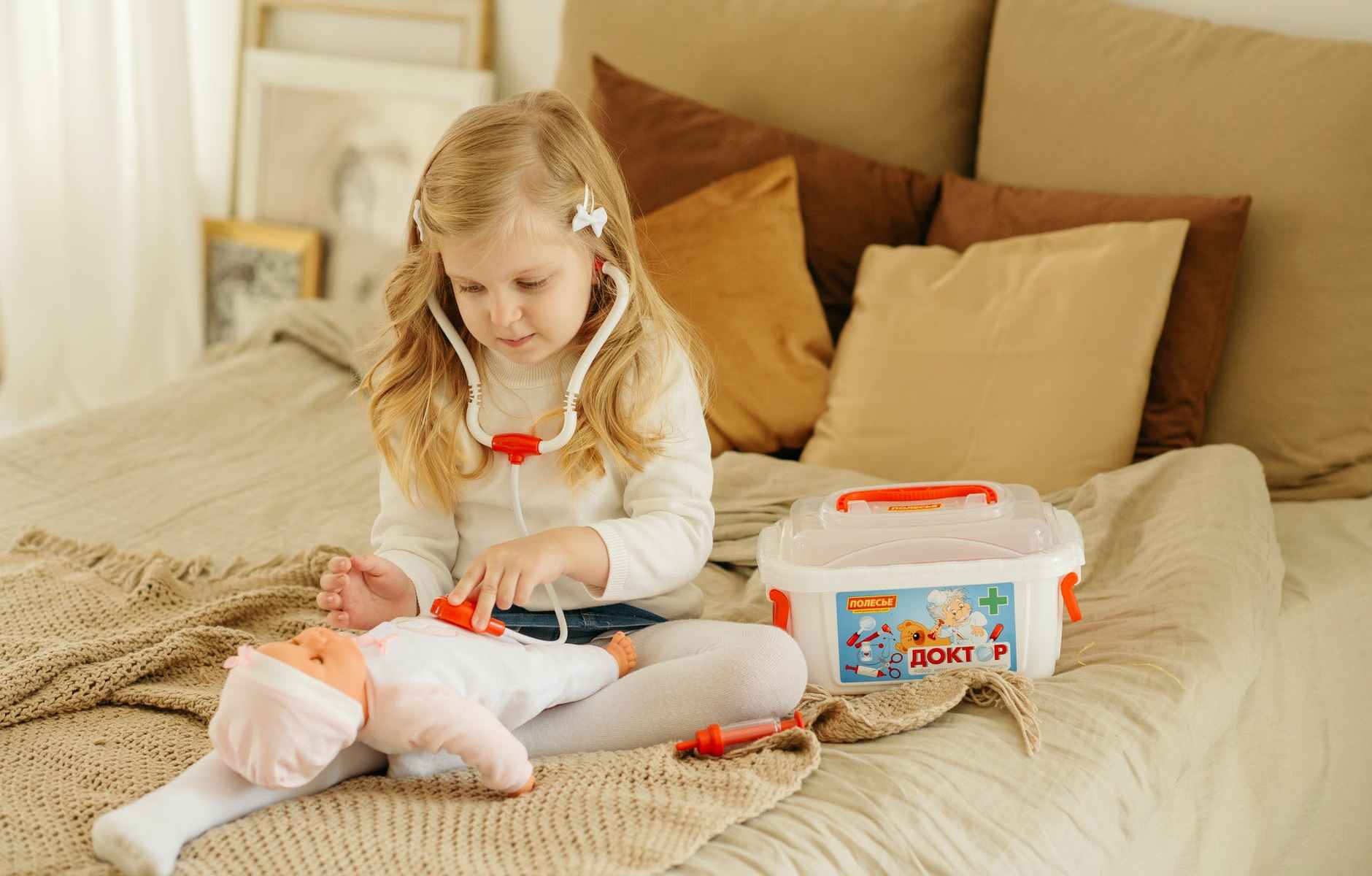
How to Prepare your Child with Autism for their Doctor Visits
Most parents must brace themselves before taking their child to the doctor’s office. As terrifying as it is for the child, it is even more anxiety provoking for the parent, especially when you don’t know how to best support your child during such high levels of stress.
When it comes to our kids with autism, who are anxious at baseline, may be non-verbal and/or have sensory needs, it does not take much for them to reach high levels of anxiety. As a Child Life Specialist trained to support children in medical settings, I wanted to share tips on how best to support your child with Autism before, during and after their doctor’s visit.
Before the Visit
Social Stories
It is always important to talk to your child about their upcoming doctor’s visit, what to expect and why they will be going. Since most kids with Autism are visual learners, you can prep them using a story book or a social story. A social story is a short narrative that helps walk your child through a social scenario. If your child is non-verbal, try using images and language that is familiar to them and adapting the social story to their understanding. A social story can use the following phrases:
– Mommy is taking me to see a doctor so he can help me with my tummy ache
– When we get there, mommy must sign my name, so the doctor knows I am here
– I may have to wait with mommy in a special waiting area before it’s my turn to see the doctor. I can play iSpy with mommy while I wait.
The social story can be in first person, like the example above, or in third person using your child’s first name: Matthew is going to see a doctor. This helps them better relate to the scenario.
Incorporating actual images of the doctor’s office into the social story can be helpful so that your child knows what to expect when they get there. When showing images of the doctor’s office and/or reading a book about going to the doctor’s office, avoid pictures or illustrations of children with worrisome or fearful expressions as your child with Autism may pick up on those expressions. Kids with smiling faces are preferred to ensure that they will be okay.
Medical play
Playing ‘doctor’ using items that the child will most likely be seeing in the doctor’s office is a great way to familiarize your child before their visit, leading to a less stressful encounter with their doctor. Some things to incorporate during medical play can include a stethoscope (letting your child feel the coolness of the bell or diaphragm on their skin), a blood pressure cuff (pretending to squeeze their arm), a thermometer to check their temperature, a scale to check weight, a tongue depressor to look inside their mouth and an otoscope to check inside their ears.
Having toys that resemble the actual tools are ideal in helping your child better make the association when encountering them in the doctor’s office. Playing with these items beforehand not onlyhelps them to be familiar with the tools and their purpose but also helps them associate these items with joy and comfort.
Medical play also gives you an insight as to how your child may be feeling about the visit. When your daughter tells her toy doll that the ‘thermometer won’t hurt’, that reflects her own understanding of the instrument. On the flip side, if she’s stabbing a needle in her doll’s arm, that too can reflect how she thinks needles feel. At that point it is best to address her concern during the play session, letting her doll know ‘you will feel a pinch but it’s quick to go away!’.
Be honest
Be honest when communicating to your child about their doctor’s visit. Avoid lying to your child by saying ‘we are going to the ice cream store’ instead of saying doctor’s office to avoid a stressful car ride. This can result in mistrust between the parent and child and may lead to an even more difficult transition to the doctor’s office the next time. Rather, be honest and let them know why it is important to go. “We will go see a doctor so he can let mommy know how to better take care of the tummy ache that’s been bothering you”.
Validate their feelings
It is important to let your child know that she is allowed to feel the emotions she is feeling saying things like: ‘it is okay to feel nervous or scared’. Avoid phrases like: ‘don’t be afraid’ since that may prevent them from opening up to you about their emotions. Validating their emotions helps them to feel understood which will lead them to be more transparent when talking to you about their concerns. This also builds trust between the parent and child.
Explain their role
Let your child know exactly what their role would be at the doctor’s office. Avoid saying: ‘don’t cry’ since crying is a natural and healthy coping mechanism for all children. Rather, validate their emotions and give them explicit instructions on what to do: “it is okay to be scared, but it’s important that you hold still so the doctor can listen to your heart and understand how best to help you”.
During the Visit
Bring comfort items
Make sure to bring your child’s favorite toys, any sensory item that can help calm them downor a familiar item that helps to destress them. If there was a social story or book that was used to prep them for their visit, you can bring that along and continue to read it to your child as he or she goes through each step of the visit.
Communication Device
It is very important that your child is able to let you know exactly how he or she is feeling before, during and after their doctor’s visit so you know how best to support them and which concerns to address. If your child requires a communication device, make sure to bring it to their visit and use it intermittently to assess their feelings.
Give choices
Children cope better when they have more control over a situation. Whenever possible, give your child choices during their doctor’s visit: let them decide which chair to sit on, which arm to let the nurse take their blood pressure on, or which snack they will earn when they are all done with their visit.
Use language that sounds less frightening to your child
Using honest yet appropriate language with your child is key in helping your child feel more comfortable at their doctor’s office. Language that sounds less frightening will help you child better cope with the experience. For example, if your child is about to have her blood pressure taken, you can tell her that the machine will give her arm a nice tight hug rather than saying the machine will squeeze her arm.
After the Visit
Reward
Give your child a reward for their bravery! Regardless of how the visit went, they got through it and a prize is well deserved. It is best to let them know beforehand that they will earn a reward at the end of the visit, even giving them choices as to what they would like. The prize should be novel and exciting to them to encourage motivation.
Debrief
Always talk with your child afterwards, asking them how they felt the visit went. For our kids with autism, using a visual emotion scale is helpful in assessing how they feel after the visit. It is important to know what they liked and did not like to better support them the next time. This is also a great time to address any concerns and answer any questions they may have. You can even have your child explain to someone else (perhaps a sibling or friend) as to how their doctor’s visit went, to better understand their perspective of the experience.
More Medical Play
You can always follow up with more medical play when you get home. If your child is non-verbal or is not as expressive with their words when telling you how they felt, they will be sure to express their emotions though play, the natural language of all children. Through medical play, you can have the childre-enact the visit, observing how they think the visit went. Your child may say things like ‘it’s okay to be scared, you just have to hold still’ which tells you they were able to internalize what was expected of them. If your child continues to show aggression, then they may still have fears that need to be addressed. That would be great opportunity to address concerns that may still be bothering your child for a smoother visit the next time.



